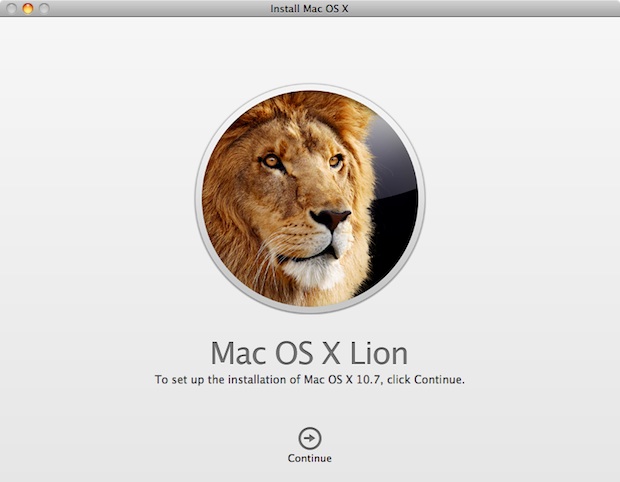Written by Howie Fenton
Senior Technology Consultant, NAPL

In case you missed it, the Apple Macintosh had a 30th birthday on January 24th. As an early adopter, some might feel like a proud parent and like most proud parents, they embarrass their children by talking about events from 30 years ago and how much things have changed.
After years of clamoring for a new desktop Mac Pro, Apple previewed the revolutionary computer last year at the Apple Worldwide Developers Conference. Later, the pricing was announced as starting at $3,000 with most costing $4,000 or more after adding hard disks and other accessories. The great irony, however, is that the newest Mac Pro is a lot like the Apple Lisa, which was the failed predecessor to the Macintosh computer three decades ago.
Many people may not remember, but in the early 1980s Apple came out with a computer called the Lisa. It was revolutionary in many ways, including its use of the first graphical user interface, protected memory, multitasking, and support for up to 2 MB of RAM. That might not sound very impressive today, but historically those were revolutionary features that did not exist on personal computers for years. For example, the Macintosh (which eventually replaced the Lisa) did not offer protected memory until 2001 when the Mac OS X became available.
The article written in Byte Magazine in February 1983 said that the Lisa was, “the most important development in computers in the last 5 years easily outpacing (the IBM PC).” It also acknowledged that the $10K price point was very high which is ironically similar to the price and complaints about the new Mac Pro.
Of course the most important question is how did the Lisa fair? Despite revolutionary computer technology, the Lisa was a commercial failure. Targeted at high-end users, most were reluctant to spend the $10,000. Similarly, the new Mac Pro is considered revolutionary, the price point for higher-end model with all the bells and whistles is also about $10,000, and the target market for the new Mac Pro is also high-end users. But the most important question is how it will sell.
Some could argue that there will always be high end users who are willing to pay the price, but for myself and other home users who replace their computers every 2 to 3 years, it seems too extravagant a price tag. For me, a $4,000 price point for a fully configured computer is just too much, especially when the enhanced productivity will be most obvious for those editing video, gaming, and/or performing 3D.
In my opinion, the new Mac Pro is a lot like the Apple Lisa. Although it offers significant technology improvements, it breaks my price elasticity. As a result, I have to consider less expensive alternatives, which may include laptops or iMacs. If you do some research or sit down with someone at the Apple Store you can configure an iMac that will achieve similar productivity for print production tasks at about half the cost.
But my greatest fear is what may happen if the Mac Pro does not sell well – will that be the end of the desktop Macintosh computer? What do you think? Is the Mac Pro too expensive to justify? Are you considering alternatives? Do you think this is the first step in the discontinuation of the desktop Macintosh computer?
—
Howie Fenton is a consultant and business adviser at NAPL. Howie advises commercial printers and in-plants on benchmarking performance against industry leaders, increasing productivity, and adding digital and value services through customer research. For more information click here.
7 Comments
Comments are closed.



I bought a Lisa in 1983, getting a $10,000 loan to pay for it. It may not have been profitable for Apple, but more than earned it’s keep for my company and one of my clients. It still runs today, albeit converted to a Mac XL.
But, the Mac Pro is in no way the equivalent of the Lisa. Lisa was a a bold attempt that became the forerunner of the Macintosh, and was important to Apple’s future at the time.
The Mac Pro will be a useful tool for professional content creators and in science and engineering, where systems in its class and price range are common and worth the investment. To Apple, it is a demonstration of what they can do, but in no way is it crucial to Apple’s future. I doubt you’ll see any sales figures from Apple. They will likely offer modest updates over time (much as the previous Mac Pro), but it will never be a mainstay of the product line.
If you need it, you can afford it. If not, the current consumer line of iMacs, Macbook Pros and even the Mini are quite powerful, and many professionals will choose them over the Pro.
Howard,
Thanks for your feedback. I too owned a Lisa but it was a remanufactured unit, renamed a Mac XL and came with emulation software allowing it to boot into the Mac OS.
As I mentioned in my blog I think the enhancements to the Mac Pro while significant benefit those working with video or 3-D modeling. The specs I’ve seen comparing the performance of print production tasks make using a “souped up” iMac more appealing.
Another issue for me is the lack of upgradeability. If you look over time I could argue that Apple has frowned upon upgrades. I remember owning one of the original 128K Macs and voiding the warranty by having someone upgrade it to 512 K and struggling with a internal hard drive. The choice was between internal mounted drive that failed often (when moved) or a slow external serial drive made by Quark. And since then several models have not been easy to upgrade.
My worst fear however is that the Mac Pro may be discontinued due to poor sales. If others believe that the price-performance and upgradeability force them to switch to IMacs, then the struggling Mac Pro sales will become more troublesome. And let’s face it, there are rumors over the last 3 years that there were not enough sales of the Macintosh Pros to support continuing development.
Howie
Great article.
Speaking as a video professional who works in a Mac only house, we will not be purchasing the new Mac Pros. Ever.
We are seriously considering the iMac 27 inch for all 15 Avid edit bays we currently run.
Our four Pro-Tools audio rooms may also upgrade to either iMacs or the Mac-Mini depending on what gets decided.
The only types of professional post facilities buying the new Mac Pro (that I’m aware of) are high-end 3D graphic houses which do motion picture & agency commercial work.
NO ONE in the professional video broadcast world is buying this current Mac Pro model.
My recording studio is moving over to “hackintosh” builds using off the shelf PC components, simply because the new Mac Pro is not designed for what we do.
I feel relieved that I am not the only one for whom the Cylinder Mac Pro is pretty much useless. To simply replace my Early 2009 Mac Pro (8-core, 16GB, 2TB) would cost me over $8k; a significant upgrade would be over $13k – and no PCIe slots!
I know Intel is way behind on delivering Haswell chips for the iMac/Mini, but still: 5 years since a real update? Now that Apple has had their big launch of iPhone 6 and Apple Watch, let’s hope they soon offer a mainstream desktop.
I use a MacPro in a daily basis. It is the best Mac I have owned. I use it along with an iMac for VFX/Postproduction work and the iMac cant compare to the Mac Pro in terms of speed. The industry that I work in is full of Macs and Mac Pros are ni exception. It simply has nothing to do with a Lisa. You can upgrade the SSD, RAM and even the processors.
People who are poo-poooing the Mac Pro for post production are missing the point of its use. As a rendering computer, it can’t be beat by any other Mac currently in use today. iMacs are ok for timeline editing and small render components, but you can’t beat 24 threads cranking away at a final render.
Perhaps the better question is asking whether or not Apple as a company will curb pricing to enterprise customers or risk losing share. It is a bit of a tangency here, but Apple has long snubbed its nose at its user base and since the mid 2000’s has steadily cut back on its enterprise approach with the removal of the Xserve, the xserveRaid, and finally with the declination of the OS X server product.
It is likely the case that Apple’s demise in the enterprise will be caused by its approach, rather than any single piece of hardware.